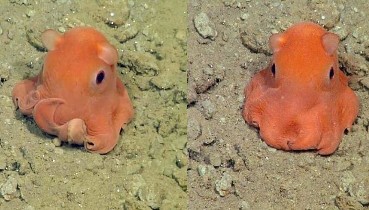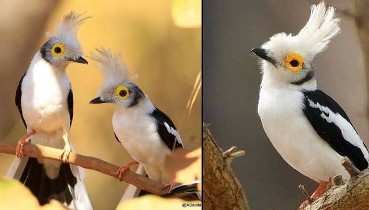
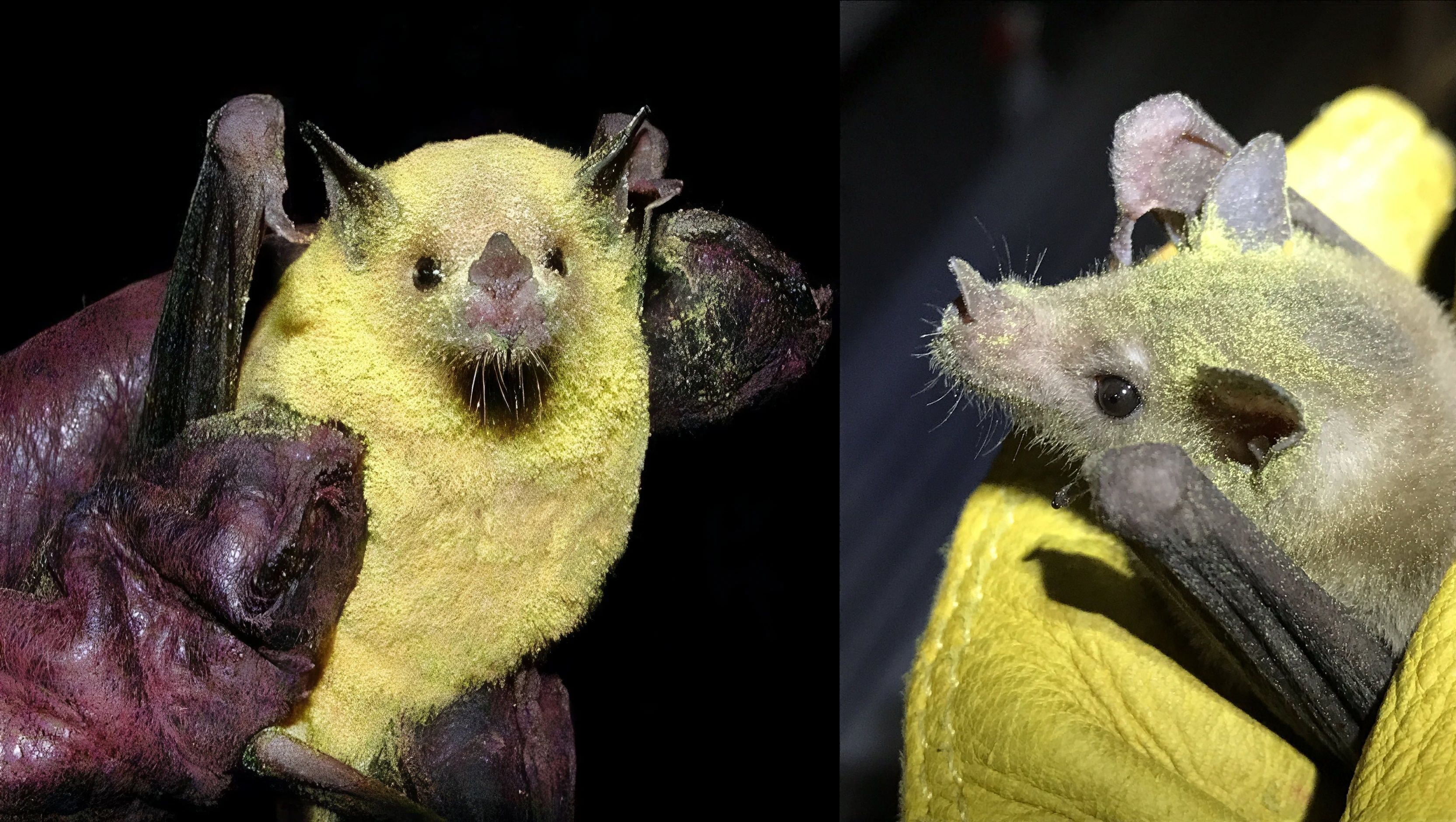
Not Just the Birds and Bees – 6 Fast Facts About Pollinating Bats
1. Not all bats eat insects!
Eating insects is by far the most common diet found among the 1,300 species of bats worldwide, which certainly benefits our farmers in keeping many insect species in check. However the pollinating role many of our nectar-feeding bats play is just as important.
Bats like “Blossum”, a Common Blossom Bat Syconycteris australis from Australia, pollinate the flowers of plants that have evolved to produce nectar to attract them. Scientists believe that many groups of plants have evolved to attract bats, as they are able to carry much larger amounts of pollen in their fur compared to other pollinators. The ability of bats to fly long distances is also another benefit to plants, especially those that occur in low densities or in habitats far apart from each other.
2. Flowers produce a musty, rotten odor to attract bats
While some of the flowers that attract bats can be quite beautiful, you probably wouldn’t want to receive a bouquet of them. To attract these flying mammals flowering plants have evolved a musty or rotten perfume. The smell is created by sulphur-containing compounds, which are uncommon in most floral aromas but have been found in the flowers of many plant species that specialize in bat pollination.
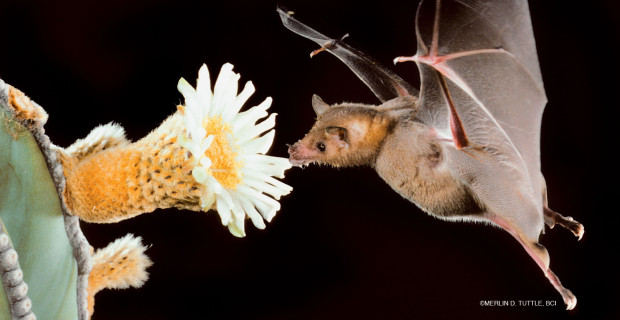 As well as their keen sense of smell, bats also use sight to find nectar-producing flowers. Bat flowers are often white or light-colored in an attempt to stand out against foliage or the night sky, but they also can range from brown and green to pink, fuchsia and yellow. Even though they only open at night, bat flowers are often dull in color, which scientists believe may function more as a camouflage from other visitors than as a visual cue to bats.
As well as their keen sense of smell, bats also use sight to find nectar-producing flowers. Bat flowers are often white or light-colored in an attempt to stand out against foliage or the night sky, but they also can range from brown and green to pink, fuchsia and yellow. Even though they only open at night, bat flowers are often dull in color, which scientists believe may function more as a camouflage from other visitors than as a visual cue to bats.
3. Some bats use echolocation to find flowers
You may have heard of bats using echolocation to hunt insects, but did you know some bats also use it to find nectar-producing plants? Indeed some plant species have evolved acoustic features in their flowers that make the echo of the bat’s ultrasonic call more conspicuous to their bat pollinators. These flowers often have a bell-shaped concave form, which effectively reflect the sounds the bats emit enabling them bats to easily find flowers in the dense growth of tropical rainforests.
While this helps some species, not all bats use echolocation to find nectar. Within Chiroptera, the mammal order that encompasses all bats, two distinct groups are found. The first are the small, mostly insect eating bats called Microchiroptera (micro-bats), which predominately use echolocation. While species of this group are found worldwide, nectar-feeding bats from this group only inhabit tropical and subtropical regions of the Americas.
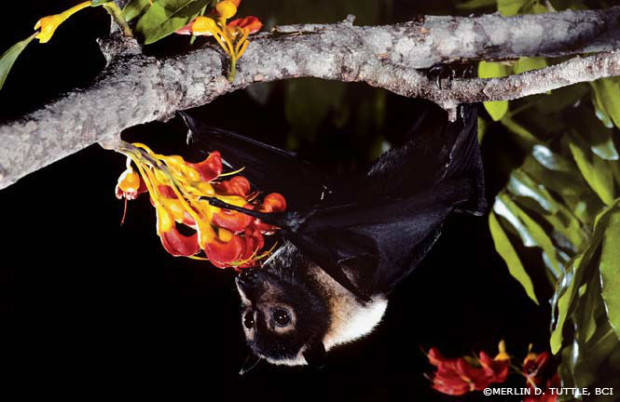 The second group is Megachiroptera (mega-bats), a group that includes all the large bats, including flying-foxes, which predominately eat fruit and nectar. Found in the Old World tropics of Africa, Europe, and Asia these bats lack the ability to echolocate, instead relying on their sight and sense of smell to find food. While they depend entirely on vision to negotiate their environment, they appear to do so quite well even in inclement weather and on moonless nights. So the old saying “blind as a bat” really isn’t true!
The second group is Megachiroptera (mega-bats), a group that includes all the large bats, including flying-foxes, which predominately eat fruit and nectar. Found in the Old World tropics of Africa, Europe, and Asia these bats lack the ability to echolocate, instead relying on their sight and sense of smell to find food. While they depend entirely on vision to negotiate their environment, they appear to do so quite well even in inclement weather and on moonless nights. So the old saying “blind as a bat” really isn’t true!
4. Without bats we would have no tequila
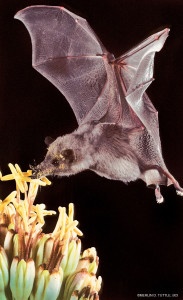 Do you enjoy Tequila? Then you need to raise your glass to the pollinating bats that helped to bring it to us! Tequila is made from the agave plant, which relies solely on bats to pollinate its flowers and reproduce. While the bats certainly drink a lot of nectar from the agave plant, you don’t have to worry about them getting drunk! To make tequila, the base or “heart” of the blue agave plant is steamed and minced before being fermented. This part of the plant is quite removed from the giant flower stalk that the bats come in search of.
Do you enjoy Tequila? Then you need to raise your glass to the pollinating bats that helped to bring it to us! Tequila is made from the agave plant, which relies solely on bats to pollinate its flowers and reproduce. While the bats certainly drink a lot of nectar from the agave plant, you don’t have to worry about them getting drunk! To make tequila, the base or “heart” of the blue agave plant is steamed and minced before being fermented. This part of the plant is quite removed from the giant flower stalk that the bats come in search of.
5. One species of nectar-feeding bat has the longest mammal tongue in the world
Could you imagine having a tongue that is 9 feet long? That is what it is like for the rare Anoura fistulata, a nectar-feeding bat from South America, which has the longest tongue (proportionally) of all mammals. A. fistulata is only the size of a mouse, but its tongue is around 8.5 centimeters long, making it up to 150% of its body length! With such a long tongue it couldn’t possibly keep all of it in its mouth. Instead, A. fistulata keeps the tongue in its chest, in a cavity between the heart and sternum.
6. Bats service many plants that we use for medicinal, cultural and economic purposes
Did you know that bats almost exclusively pollinate wild bananas, which originate from Southeast Asia? Bats pollinate many ecologically and economically important plants from around the world. The products that we value from these plants are more than just fruits, including fibers and timbers that we use everyday. Flying foxes, nectar and fruit eating mega bats from Australia, pollinate the dry eucalyptus forests, which provide us with timber and oils that are shipped around the world.
Mexican agave plants, a source of fiber and tequila, are solely reliant on the pollination services of several nectar-feeding bats. Many tropical and sub-tropical rainforest ecosystems also rely on bat pollinators to regenerate. Without nectar feeding bats not only would our environment suffer, but our way of living as well!
Recommended Videos
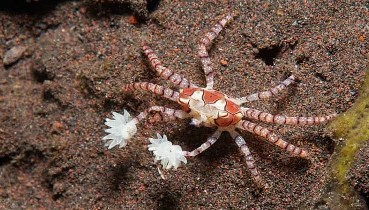 Meet the Pom Pom Crab128 views
Meet the Pom Pom Crab128 views Ancient Giant Trees Found Petrified In Thailand87 views
Ancient Giant Trees Found Petrified In Thailand87 views-
Advertisements
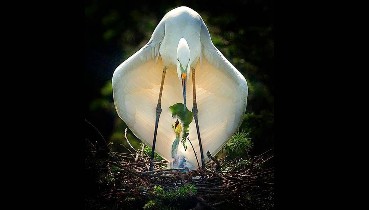 The Chinese egret or Swinhoe's egret (Egretta eulophotes) is a threatened species of egret from east Asia.309 views
The Chinese egret or Swinhoe's egret (Egretta eulophotes) is a threatened species of egret from east Asia.309 views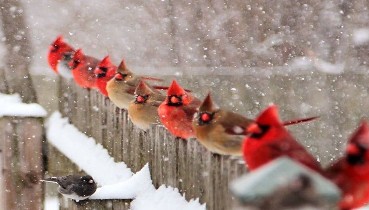 12 Birds You Can Spot During the Winter Season3981 views
12 Birds You Can Spot During the Winter Season3981 views 45 People Who Had A Funny Bad Day2063 views
45 People Who Had A Funny Bad Day2063 views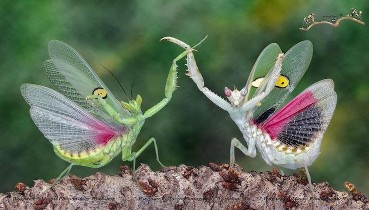 Macro Photography Captures the Delicate Dance of Mantises in Malaysia95 views
Macro Photography Captures the Delicate Dance of Mantises in Malaysia95 views The Famous Easter Island Head Statues Actually Have Bodies326 views
The Famous Easter Island Head Statues Actually Have Bodies326 views The “Design Therapy” Instagram Page Collects The Best Examples Of Design, Here Are 113 Of The Most Satisfying Pics183 views
The “Design Therapy” Instagram Page Collects The Best Examples Of Design, Here Are 113 Of The Most Satisfying Pics183 views

